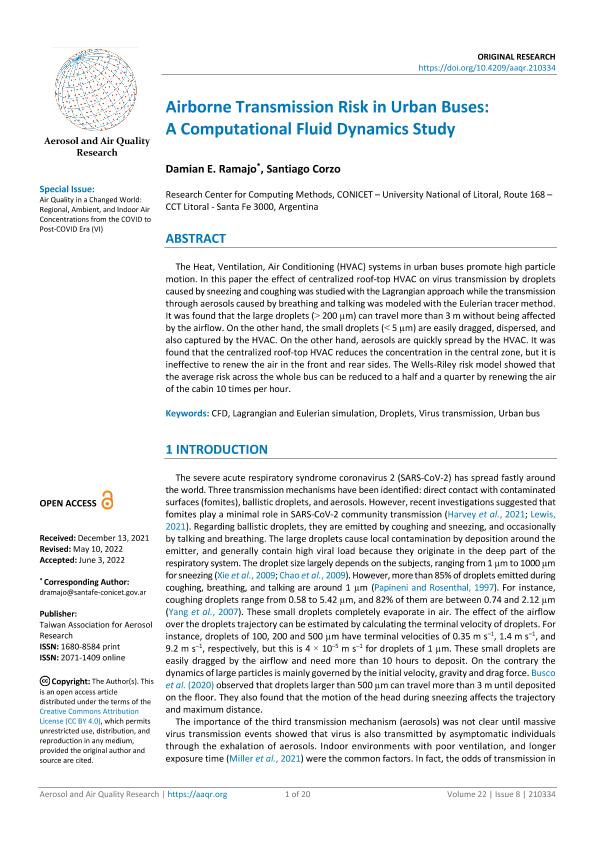Artículo
Airborne Transmission Risk in Urban Buses: A Computational Fluid Dynamics Study
Fecha de publicación:
08/2022
Editorial:
Taiwan Association for Aerosol Research-Taar
Revista:
Aerosol And Air Quality Research
ISSN:
1680-8584
Idioma:
Inglés
Tipo de recurso:
Artículo publicado
Clasificación temática:
Resumen
The Heat, Ventilation, Air Conditioning (HVAC) systems in urban buses promote high particle motion. In this paper the effect of centralized roof-top HVAC on virus transmission by droplets caused by sneezing and coughing was studied with the Lagrangian approach while the transmission through aerosols caused by breathing and talking was modeled with the Eulerian tracer method. It was found that the large droplets (> 200 µm) can travel more than 3 m without being affected by the airflow. On the other hand, the small droplets (< 5 µm) are easily dragged, dispersed, and also captured by the HVAC. On the other hand, aerosols are quickly spread by the HVAC. It was found that the centralized roof-top HVAC reduces the concentration in the central zone, but it is ineffective to renew the air in the front and rear sides. The Wells-Riley risk model showed that the average risk across the whole bus can be reduced to a half and a quarter by renewing the air of the cabin 10 times per hour.
Palabras clave:
CFD
,
DROPLETS
,
LAGRANGIAN AND EULERIAN SIMULATION
,
URBAN BUS
,
VIRUS TRANSMISSION
Archivos asociados
Licencia
Identificadores
Colecciones
Articulos(CIMEC)
Articulos de CENTRO DE INVESTIGACION DE METODOS COMPUTACIONALES
Articulos de CENTRO DE INVESTIGACION DE METODOS COMPUTACIONALES
Citación
Ramajo, Damian Enrique; Corzo, Santiago Francisco; Airborne Transmission Risk in Urban Buses: A Computational Fluid Dynamics Study; Taiwan Association for Aerosol Research-Taar; Aerosol And Air Quality Research; 22; 8; 8-2022; 1-20
Compartir
Altmétricas




